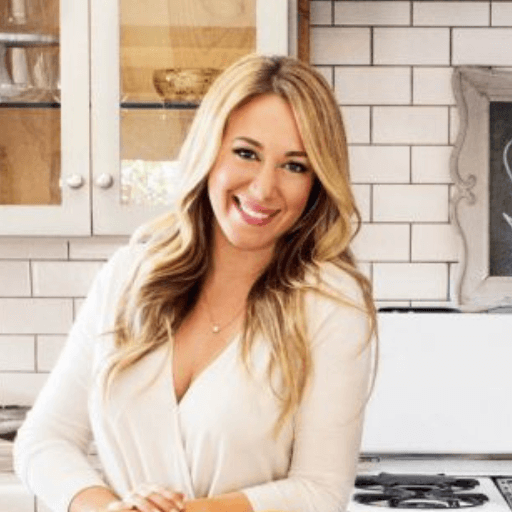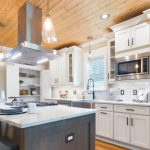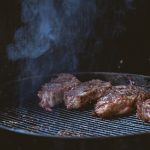The standard depth for a range hood is between 20 to 24 inches. A range hood is an essential appliance in the kitchen that helps remove smoke, steam, and odors while cooking.
When selecting a range hood, the correct size will ensure optimal performance. The depth of the range hood will depend on the size of the cooktop or range, as well as the cabinet depth. The range hood’s width should be equal to or greater than the cooktop’s width.
Also, consider the height of the range hood, which should be at least 18 to 30 inches above the cooktop. A properly sized range hood can effectively improve the air quality in your kitchen.

Credit: www.maytag.com
Basics Of Range Hoods
What Are Range Hoods?
Range hoods are specialized kitchen appliances that filter out potentially harmful air pollutants, including smoke and steam, through an exhaust system. Range hoods are installed above cooktops, or ranges, and work by extracting unwanted fumes through an internal blower motor and fan, expelling them through vent pipes to the outside of a home.
They are also commonly referred to as exhaust hoods, vent hoods, or extractor hoods.
Different Types Of Range Hoods
There are various types of range hoods available in the market, and choosing the right one can depend on personal preferences and cooking requirements. Here are some common types of range hoods:
- Wall-mounted range hoods: These hoods are mounted on walls and work well for kitchens with cooktops or ranges that are near a wall.
- Island range hoods: These range hoods are hung from the ceiling and work for kitchens with cooktops that are in an island or peninsula configuration.
- Downdraft range hoods: These range hoods are installed behind or alongside a cooktop and are ideal when a traditional range hood cannot be installed. They work by drawing smoke and fumes downward and out, rather than upward.
- Under cabinet range hoods: These hoods are installed underneath cabinets and above the cooktop. They are an affordable option that saves cabinet space and are a good fit for small kitchens.
How Do Range Hoods Work?
Range hoods work by filtering out and venting potentially harmful pollutants from the air. To accomplish this, the range hood uses a blower motor and a fan to suck in the surrounding air and push it through a filter to remove the unwanted particles.
Once the air is purified, it is then vented outside through a vent pipe.
The filters inside the range hood are the most important element for effective filtering, and there are two main types: charcoal/carbon filters and grease filters. Grease filters capture grease and oil particles, preventing them from building up in the exhaust fan and ductwork, while charcoal/carbon filters remove odors and smoke particles.
It’s important to maintain and clean range hoods regularly to ensure that they function optimally. This includes cleaning the filters, wiping down the exterior, and inspecting the vent pipes for possible blockages. A well-maintained range hood will work more efficiently, last longer, and provide a healthier, safer indoor environment.
Benefits Of Selecting The Perfect Depth
Benefits Of Selecting The Perfect Depth For Your Range Hood
When it comes to kitchen appliances, range hoods are often overlooked, yet they are crucial in maintaining a comfortable and safe environment. The depth of a range hood has a significant impact on its effectiveness, as well as the overall cooking experience and kitchen aesthetics.
Here are the benefits of selecting the perfect depth for your range hood:
Effectiveness Of Range Hoods That Are Too Shallow Or Too Deep
- If a range hood is too shallow, it will not capture all the smoke, steam, and grease produced while cooking, resulting in poor air quality in the kitchen.
- On the other hand, a range hood that is too deep may capture more than necessary, affecting the airflow and resulting in reduced suction power.
Health And Safety Concerns With Incorrect Range Hood Depth Selection
- Poor air quality in the kitchen due to an inadequate range hood can lead to respiratory issues and aggravate existing health conditions like asthma.
- A range hood that is too deep or too shallow can cause a fire hazard. If it’s too shallow, it may not capture grease, which can accumulate and ignite. If it’s too deep, it may trap heat, which can cause a fire.
Impact On Cooking Experience And Kitchen Aesthetics
- Cooking produces steam, smoke, and odors, which can permeate through the house if left uncontrolled. A properly installed range hood with the perfect depth will capture all of these and make your cooking experience pleasant.
- Kitchen aesthetics play an important role in the overall look and feel of your home. A range hood that perfectly fits your kitchen’s design will enhance its overall visual appeal.
Choosing the perfect depth for your range hood is crucial for both its effectiveness and your health and safety. With the right range hood, you will enjoy a comfortable and healthy environment while cooking, and your kitchen will look amazing.
How To Measure Range Hood Depth
How deep should range hood be: how to measure range hood depth
Range hoods are vital in keeping your kitchen smoke and odor-free while you cook. They ensure proper air ventilation and prevent potential fire hazards. A critical component of range hoods is knowing their depth to make sure they fit perfectly in your kitchen.
Here’s a step-by-step guide on how to measure range hood depth for ducted and ductless options.
Tools Required To Measure Range Hood Depth:
To measure your range hood depth, you’ll need the following tools:
- Tape measure
- Measuring stick
Step-By-Step Guide To Measuring Range Hood Depth:
Now that you have the right tools, follow these steps to measure your range hood depth:
- Turn off the range hood and allow it to cool down.
- Remove any filters in the range hood.
- Measure the range hood’s front to back, starting from the edge of the range hood’s upper lip.
- If the range hood has a slope toward the back, measure the deepest point of the slope.
- Measure the distance between the front and the back of the range hood’s lower lip.
- Add the measurements for the upper lip and lower lip, along with any slope measurements, to determine your range hood’s depth.
How To Measure Range Hood Depth For Ducted And Ductless Options:
Ducted and ductless range hoods vary in size, and so do the measurements to get the proper depth. Here are the ways to measure range hood depth for both options:
Measuring Range Hood Depth For Ducted Options
- Measure the exhaust opening’s top and bottom width, which should cover the range hood’s central surface.
- Measure the width of the range hood’s filter area, which isn’t part of its central surface.
- Add the exhaust opening width and the filter area width to determine the range hood’s depth.
Measuring Range Hood Depth For Ductless Options
- Measure the filter width and the exhaust opening width to determine the range hood’s depth.
- Add 1 inch for the ductless motor installation depth to get the final range hood depth.
By following these simple steps, you can easily measure your range hood’s depth. It ensures that you get the correct size range hood that will operate up to its intended capacity. Plus, it will seamlessly blend with your overall kitchen design.
Factors To Consider When Selecting Range Hood Depth
Choosing the right range hood depth is essential for a functional and aesthetic kitchen. Here are some factors to consider when determining the proper range hood depth.
Kitchen Size And Layout
The size and layout of your kitchen should be one of the first considerations when selecting the depth of your range hood. Here are some points to keep in mind.
- For larger kitchens with a spacious cooking area, a deeper range hood is ideal to ensure effective airflow and ventilation.
- In a small kitchen, a shallow range hood is an excellent choice as it maintains a streamlined appearance while enhancing functionality.
- The layout of your kitchen is critical, as it determines airflow and ventilation requirements. The depth of your range hood should align with the placement of your stove or cooktop to ensure maximum efficiency.
Stove Size And Type
The size and type of your stove or cooktop play a significant role in determining the depth of your range hood. Consider the following points.
- A larger stove generally requires a deeper range hood for optimal ventilation.
- Gas stoves generate more heat and smoke than electric ones, so a deep range hood is preferable to maintain proper airflow and prevent smoke from spilling over.
- A shallow range hood is adequate for an induction or electric cooktop, but it still needs to be positioned according to the manufacturer’s recommendations.
Cooking Frequency And Intensity
How often and how intensely you cook also affects what depth range hood you choose. Here are some things to consider.
- If you frequently cook delicate meals, a shallow range hood is a suitable option as it prevents smoke and steam from damaging your meal’s flavor and texture.
- For those who cook heavily and frequently, a deeper range hood with powerful ventilation is essential for smoke and steam removal to avoid lingering smells.
Personal Preferences And Style
Your personal preferences and style are equally important when selecting the depth of your range hood. Some styles and preferences to consider:
- Modern kitchens with glass cabinets and minimalist design work best with shallow hoods that blend seamlessly with the cabinetry.
- Rustic kitchens with wooden finishes and exposed brickwork match a deeper hood that makes a statement and adds character.
- More traditional kitchens with a classic aesthetic can work with either a shallow or a deeper range hood, depending on personal taste and preferences.
Choosing the correct range hood depth based on these factors is vital. A range hood that fits perfectly ensures proper ventilation and adds an excellent design element to your kitchen.
Frequently Asked Questions On How Deep Should Range Hood Be
What Is The Standard Depth Of A Range Hood?
Most industry standards recommend that the depth of a range hood should be at least 18 inches.
Can The Depth Of A Range Hood Be Customized?
Yes, the depth of a range hood can be customized to fit your specific needs and preferences.
How Do I Determine The Right Depth For My Range Hood?
The depth of your range hood should be determined by the size of your cooktop and the type of cooking you do. A depth of 21 to 24 inches is recommended for larger cooktops or if you frequently cook with large pans.
What Are The Consequences Of Having A Range Hood That Is Too Shallow?
A range hood that is too shallow will not be able to effectively capture smoke, steam, and fumes from cooking. This can result in poor indoor air quality, unpleasant odors, and potentially harmful chemicals lingering in your home.
Can The Installation Height Affect The Depth Of A Range Hood?
Yes, the installation height can affect the depth of a range hood. A higher installation height may require a deeper range hood to effectively capture smoke and fumes from cooking. Consult with a professional installer to determine the appropriate depth for your specific installation height.
Conclusion
Now that you’re armed with the information on how deep your range hood should be, you won’t have to worry about pesky smoke and cooking odors clinging to your clothes and furniture. The size of your stove, cooking habits, and the layout of your kitchen should all be considered before determining the appropriate depth of your range hood.
Remember to always refer to the manufacturer’s instructions for the most accurate measurements. Investing in a properly-sized range hood will not only improve the air quality of your kitchen but will also add to the overall functionality, health, and safety of your home.
By taking the time to select a range hood that is right for you, cooking can be enjoyable and comfortable. Happy cooking!

Freda is a passionate foodie and kitchen gadget enthusiast. With over 10 years of experience in the culinary industry, Freda brings her expertise in testing and reviewing kitchen gadgets.





